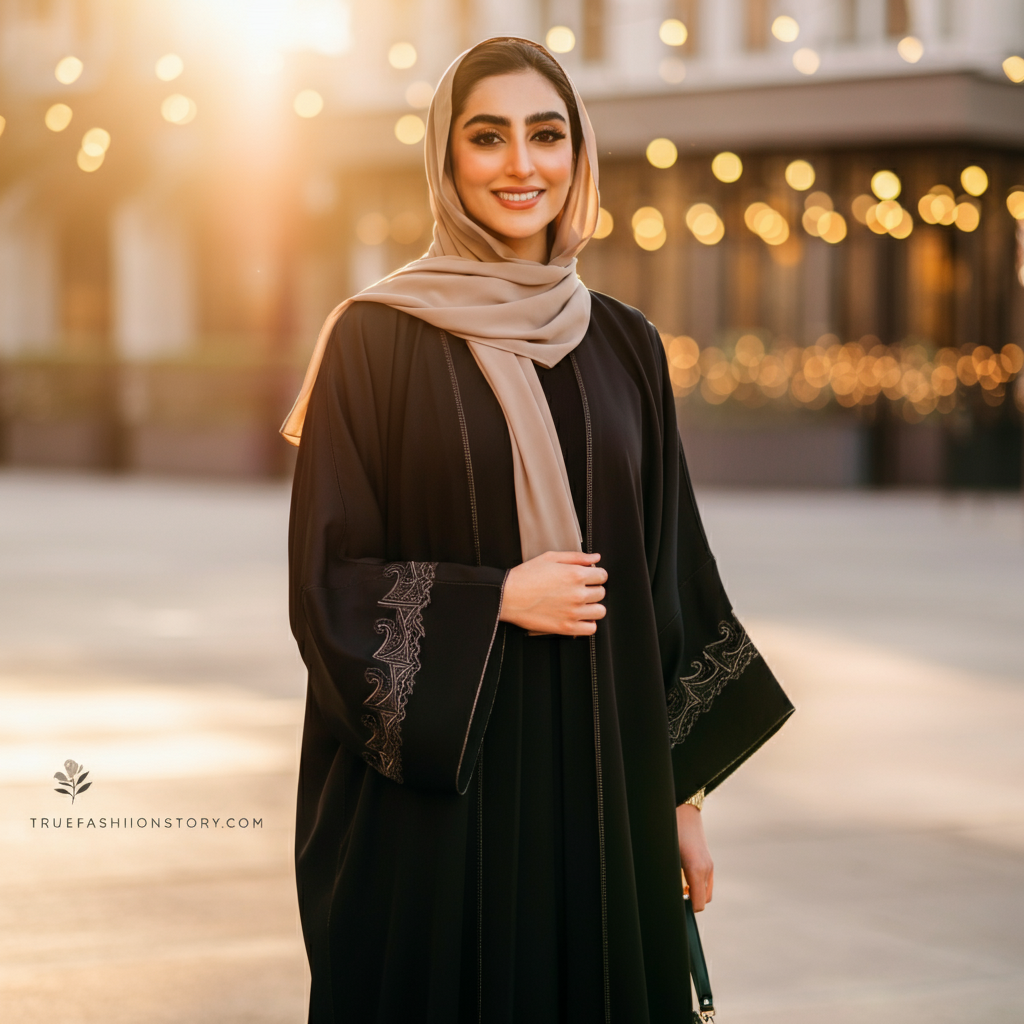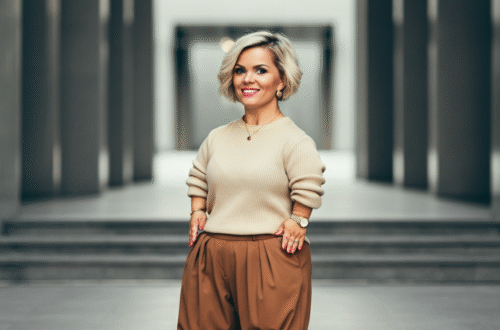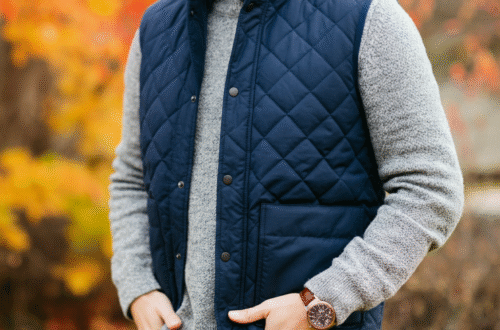The world of fashion is vast and beautiful, filled with garments that tell stories of culture, faith, and personal style. One of the most elegant and versatile of these is the abaya dress. This flowing, graceful garment is more than just clothing; it is a statement of modesty, identity, and sophisticated fashion. Whether you are new to modest wear or looking to expand your wardrobe, understanding the abaya dress opens up a world of timeless elegance. From its deep cultural roots to its modern interpretations on runways and city streets, the abaya is a piece that has captivated hearts globally.
This guide will walk you through everything you need to know about the abaya dress. We will explore its history, the different styles available, the best fabrics for comfort and occasion, and how to style it for your unique look. Get ready to discover why this iconic garment continues to be a beloved staple in modest fashion.
Key Takeaways
- The abaya dress is a versatile garment that blends tradition with modern fashion, offering options for every occasion.
- Fabrics like crepe, nidha, chiffon, and cotton are chosen for different purposes, from everyday comfort to formal elegance.
- Styling an abaya is a personal journey, with options for layering, accessorizing, and coordinating with a hijab to express your individual taste.
- Proper care, including gentle washing and correct storage, is essential to maintain the beauty and longevity of your abaya dress.
- Modern abaya designs now include practical features like pockets, nursing-friendly access, and travel-friendly fabrics, making them suitable for a contemporary lifestyle.
What Exactly is an Abaya Dress?
At its core, an abaya dress is a simple, loose over-garment worn by women in many parts of the Muslim world, particularly in the Arabian Peninsula. Its primary purpose is to cover the body in public, aligning with Islamic principles of modesty. Traditionally, abayas were simple black cloaks made from heavy fabrics. However, the modern abaya has evolved significantly. Today, it is a key piece in the global modest fashion movement, embraced by women of all backgrounds who appreciate its elegance and comfort. It is no longer just a black robe but a fashion statement available in countless colors, fabrics, and intricate designs, including delicate embroidery and beadwork.
The beauty of the abaya dress lies in its simplicity and adaptability. It can be worn over any outfit, instantly creating a modest and put-together look. It flows gracefully with the wearer’s movements, providing coverage without sacrificing style. This garment serves as a canvas for personal expression, allowing women to showcase their taste through the cut, fabric, and embellishments of their chosen abaya.
The Cultural Significance and History of the Abaya
The history of the abaya is deeply intertwined with the cultural and religious heritage of the Middle East. For centuries, it has been a symbol of modesty and identity for Muslim women. The concept of covering is rooted in Islamic teachings that encourage humility and privacy. The abaya dress serves as a practical application of these principles, providing a barrier between the individual and the public gaze. Historically, the design was straightforward: a large piece of fabric, often black, that draped from the head or shoulders to the feet. Its purpose was purely functional, meant to conceal the contours of the body when in public spaces.
Over time, as societies evolved and global influences grew, the abaya began to transform. While its core purpose of modesty remained, it started to absorb elements of contemporary fashion. This evolution has been particularly rapid in recent decades, with designers from Dubai to Paris reimagining the traditional garment. Today, the abaya dress reflects a blend of heritage and modernity. It stands as a powerful symbol of cultural pride and individual faith, while also being a chic and fashionable choice for women who value modest dressing. You can find more interesting fashion histories on the truefashionstory.com Blog.
Exploring Different Styles of the Abaya Dress
The modern abaya is incredibly diverse, with styles to suit every taste and occasion. Understanding the different types can help you find the perfect one for your wardrobe.
Open-Front vs. Closed Abaya
The most fundamental distinction is between an open-front abaya and a closed one. A closed abaya is a single, pullover-style garment that offers complete coverage and a classic, seamless look. It is simple, elegant, and requires minimal styling. In contrast, an open-front abaya functions more like a long cardigan or duster coat. It can be worn open to show the outfit underneath or closed with discreet buttons, snaps, or a belt. This style is highly versatile, allowing for creative layering with different tops, pants, or dresses.
Kimono Style Abaya
Inspired by the traditional Japanese garment, the kimono style abaya has gained immense popularity. It features wide sleeves, a relaxed fit, and an open-front design, often cinched at the waist with a matching fabric belt. This style is celebrated for its modern and chic silhouette. Kimono abayas are frequently crafted from luxurious fabrics like satin or lightweight chiffon, making them perfect for special events. Their flowing lines and elegant drape offer a sophisticated look that feels both contemporary and timelessly graceful.
Batwing and Butterfly Abayas
For those who love a dramatic and flowing silhouette, the batwing or butterfly abaya is an excellent choice. These designs feature sleeves that are cut very wide and are continuous with the body of the garment, creating a “wing-like” effect. This construction provides maximum coverage and comfort, as the fabric drapes loosely around the body. A batwing abaya dress offers an effortlessly glamorous look and is particularly comfortable in warmer climates due to its airy and unrestricted fit. It’s a style that makes a statement through its unique and beautiful shape.
The Best Fabrics for Your Abaya Dress
The fabric of an abaya plays a crucial role in its comfort, appearance, and suitability for different occasions.
|
Fabric |
Best For |
Characteristics |
|---|---|---|
|
Nidha |
Luxury, Formal Wear |
Soft, silky, lightweight, excellent drape |
|
Crepe |
Everyday & Occasion Wear |
Textured, matte finish, durable, resists wrinkles |
|
Chiffon |
Layering, Special Events |
Sheer, lightweight, ethereal, elegant |
|
Satin |
Evening Wear, Celebrations |
Smooth, glossy, luxurious feel |
|
Cotton |
Hot Weather, Casual Wear |
Breathable, soft, absorbent, comfortable |
|
Jersey |
Casual, Travel |
Stretchy, comfortable, wrinkle-resistant |
Breathable Fabrics for Everyday Comfort
For daily wear, especially in warm weather, breathable fabrics are essential. Cotton is a top choice due to its natural softness, breathability, and absorbency, keeping you cool and comfortable throughout the day. Linen is another excellent option, prized for its lightweight feel and ability to wick moisture away from the body. Another popular material for everyday wear is high-quality crepe. It is known for its slightly textured surface, beautiful drape, and resistance to wrinkling, making it a practical and polished choice for a busy lifestyle. Choosing an abaya dress in one of these fabrics ensures you can go about your day feeling fresh and at ease without compromising on style.
Luxurious Materials for Occasion Wear
When dressing for a special event like a wedding or holiday celebration, the fabric of your abaya can elevate your entire look. Satin is a classic choice for occasion wear, with its smooth, glossy finish that catches the light beautifully. An abaya dress made of satin has an inherently formal and glamorous feel. Chiffon is another favorite, often used for layered abayas. Its sheer, ethereal quality adds a touch of romance and sophistication. For the ultimate in luxury, many women turn to Nidha fabric. Originating from the Middle East, Nidha is a high-grade polyester that is incredibly soft, lightweight, and has a stunning drape, making it the premier choice for elegant and high-end abayas.
How to Style Your Abaya Dress
Styling an abaya is where you can truly let your personality shine. It’s a versatile canvas that can be dressed up or down with the right accessories.
Layering for a Modern Look
Layering is key to modern abaya styling, especially with open-front designs. You can wear your abaya over a simple t-shirt and jeans for a casual, chic look, or pair it with tailored trousers and a silk blouse for a more professional ensemble. Playing with colors and textures underneath can completely change the vibe of your abaya dress. For a monochromatic look, wear a black abaya over an all-black outfit for sleek sophistication. Alternatively, use a neutral abaya to frame a brightly colored dress or top underneath, creating a pop of visual interest. Layering also adds practicality, allowing you to adapt your outfit to changing temperatures.
Choosing the Right Hijab
Your hijab is the most important accessory to your abaya. Hijab styling can either complement or contrast with your abaya to create a cohesive look. For a harmonious feel, you can match your hijab color to your abaya or to the color of the embroidery or print on it. For example, a black abaya with gold embroidery looks stunning with a gold or beige hijab. If you prefer a bolder look, you can choose a hijab in a contrasting color or a vibrant print to stand out against a solid-colored abaya. The fabric of your hijab matters too; a chiffon hijab pairs well with a formal abaya, while a soft jersey or cotton hijab is perfect for a casual, everyday abaya dress.
Accessorizing Your Abaya
Accessories are the finishing touch that pulls your entire outfit together. A stylish belt can be used to cinch the waist of an open-front or kimono style abaya, creating a more defined silhouette. Choose a slim leather belt for a classic look or a metallic one for a touch of glamour. Jewelry also plays a big role. Long necklaces can elongate your frame, while statement earrings can draw attention to your face. The right handbag is also crucial. A structured tote bag works well for a professional look, while a delicate clutch is perfect for an evening out. Don’t forget your shoes—heels can add elegance, while stylish flats or sneakers keep it casual and comfortable.
Finding the Perfect Fit: Sizing and Alterations
Getting the right fit is crucial for both comfort and appearance. An abaya should be loose but not so large that it overwhelms your frame. Key measurements to consider are length, sleeve length, and bust.
- Length: The ideal length for an abaya is one that skims the top of your shoes, covering your ankles without dragging on the ground.
- Sleeves: Sleeves should end at your wrist, allowing for easy movement without getting in the way.
- Bust and Hips: The abaya should drape loosely over your bust and hips without clinging.
Many women, especially those who are petite or plus size, may need alterations to get the perfect fit. A good tailor can easily hem the length or shorten the sleeves of an abaya dress. When buying online, always check the size chart and compare it to your measurements.
Modern Innovations in Abaya Design
Contemporary designers are constantly innovating, adding practical features to the abaya dress to suit the modern woman’s lifestyle. Many abayas now come with pockets, a simple but incredibly useful addition for carrying your phone and keys. For new mothers, nursing-friendly abayas with discreet zippers or snaps offer convenience and modesty. Maternity abayas are also available, designed with extra room and comfortable, stretchy fabrics. Furthermore, the rise of travel-friendly abayas made from wrinkle-resistant materials like crepe and jersey means you can pack your abaya and wear it upon arrival without worrying about ironing, making it an essential piece for the global woman.
Abaya Dress vs. Jilbab vs. Kaftan
While they may seem similar, the abaya, jilbab, and kaftan are distinct garments. The abaya dress is typically an over-garment worn over other clothes. A jilbab is often a single, all-in-one garment that covers the entire body, sometimes including an attached head covering. A kaftan is a more general term for a long, loose tunic or robe and is a traditional garment in many cultures beyond the Middle East. It is often more colorful and worn for both casual and formal occasions, but it is not exclusively associated with modest Islamic dress in the way an abaya is. Understanding the difference—jilbab vs abaya vs kaftan—helps you choose the right garment for the right purpose.
Caring for Your Abaya Dress
To keep your abaya looking beautiful for years to come, proper care is essential. Always check the care instructions on the label. Many delicate fabrics like satin, chiffon, or those with heavy beadwork and embroidery should be hand-washed or dry-cleaned. For everyday fabrics like crepe or cotton, a gentle machine wash on a cold cycle is usually safe. Avoid using harsh detergents or bleach. To dry, hang your abaya dress away from direct sunlight to prevent the color from fading. Store it on a hanger to avoid wrinkles and maintain its shape.
Frequently Asked Questions (FAQ)
1. Can anyone wear an abaya dress?
Absolutely. While the abaya has cultural and religious roots, it has become a staple in the global modest fashion movement. Women from all backgrounds wear the abaya dress for its elegance, comfort, and style.
2. What do you wear under an abaya dress?
What you wear underneath depends on the style of the abaya and the occasion. For an open-front abaya, you can wear anything from jeans and a top to a full-length dress. Under a closed abaya, lightweight trousers and a simple top are common choices for comfort.
3. How do I choose the right size for an abaya dress online?
Always refer to the brand’s size chart. Measure your bust, length from shoulder to ankle, and arm length, and compare these to the chart. Read reviews to see if other customers mention whether the abaya runs large, small, or true to size.
4. Are all abayas black?
No, definitely not! While black is the traditional and a very popular color, modern abayas come in every color imaginable, from soft pastels and earthy neutrals to bold, vibrant hues. You can find an abaya dress to match any mood or season.
5. How is an abaya different from a kaftan?
An abaya is specifically an over-garment worn for modesty, originating from the Middle East. A kaftan is a broader term for a loose-fitting robe or tunic found in many cultures worldwide. While some kaftans can be styled for a modest look, the abaya dress is purpose-designed for it.
6. Can I wear an abaya dress for formal occasions?
Yes, an abaya can be very formal. Look for an abaya dress made from luxurious fabrics like satin, chiffon, or Nidha. Styles with intricate embroidery, beadwork, or elegant lacework are perfect for weddings, parties, and other special events.
7. Is an abaya dress comfortable to wear in the summer?
It can be very comfortable. The key is to choose an abaya made from lightweight and breathable fabrics like cotton, linen, or high-quality light crepe. A loose-fitting style will also promote air circulation, keeping you cool.





